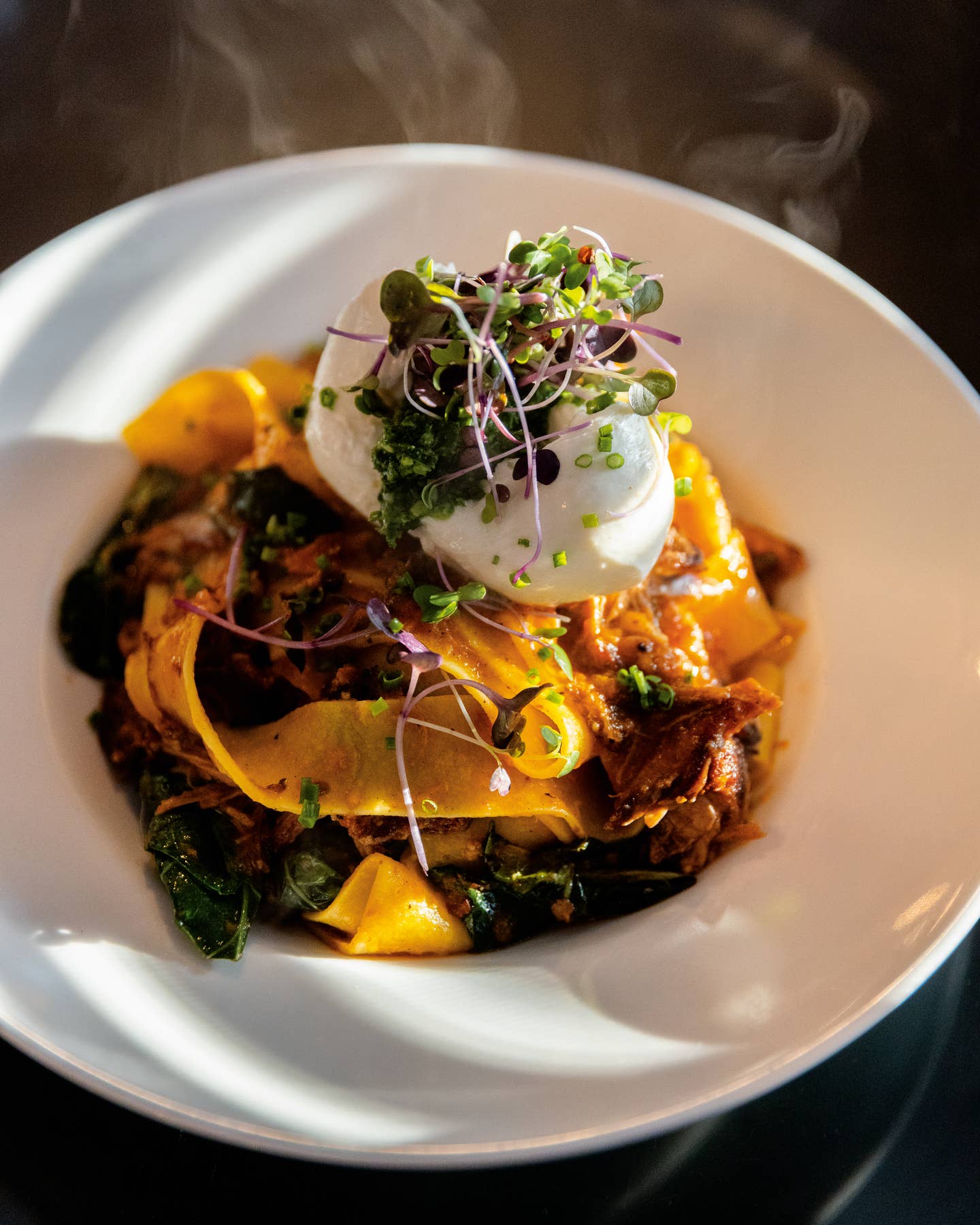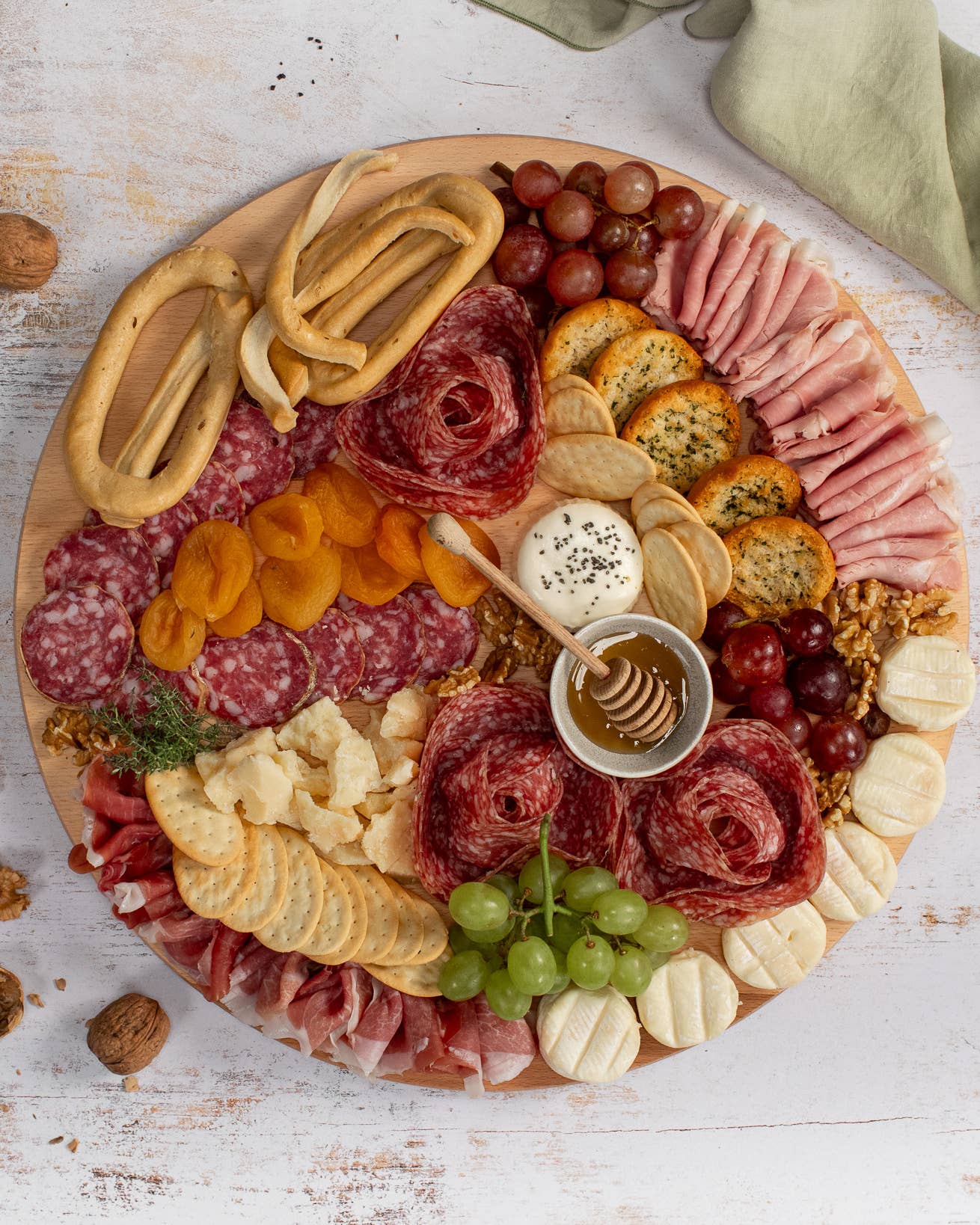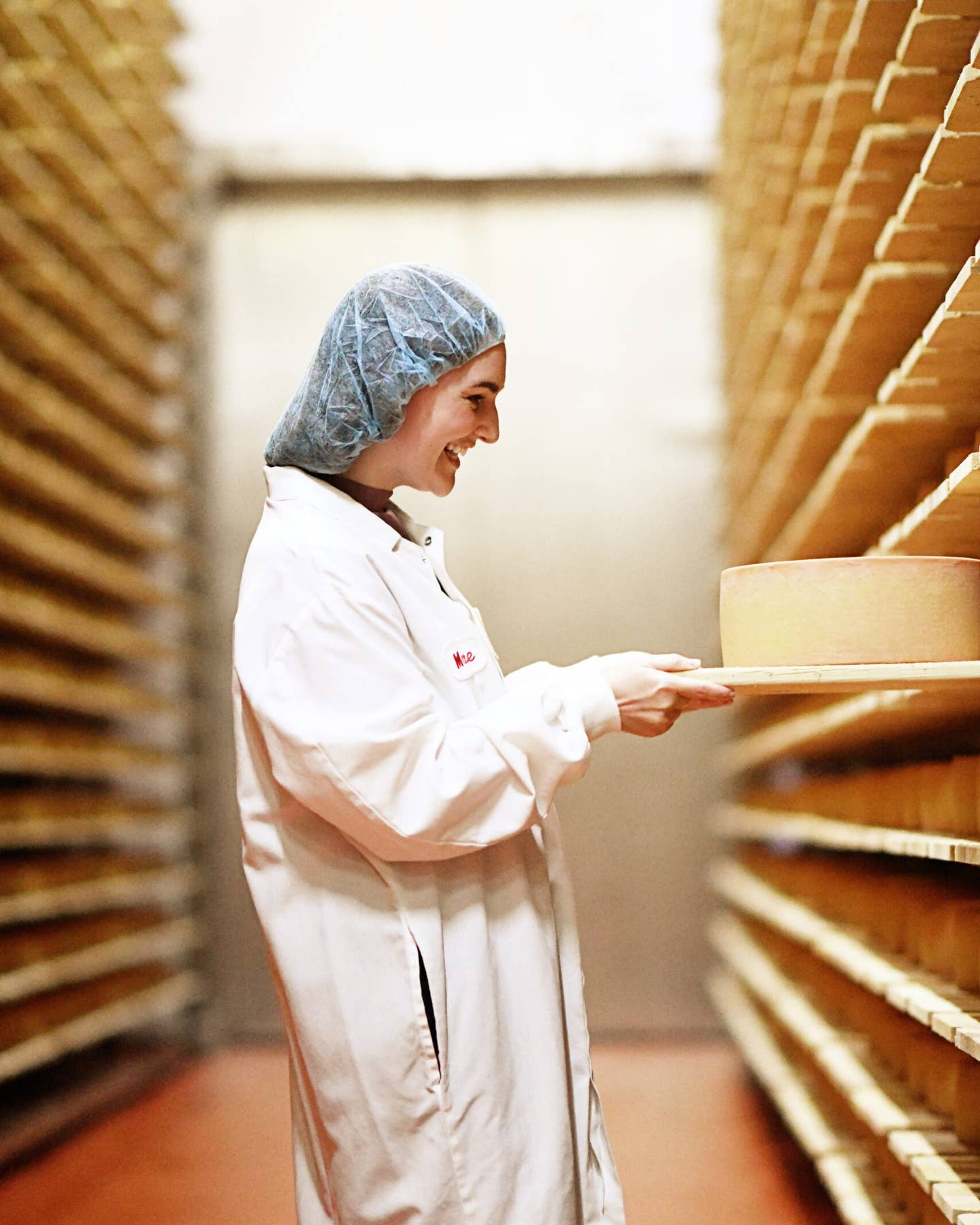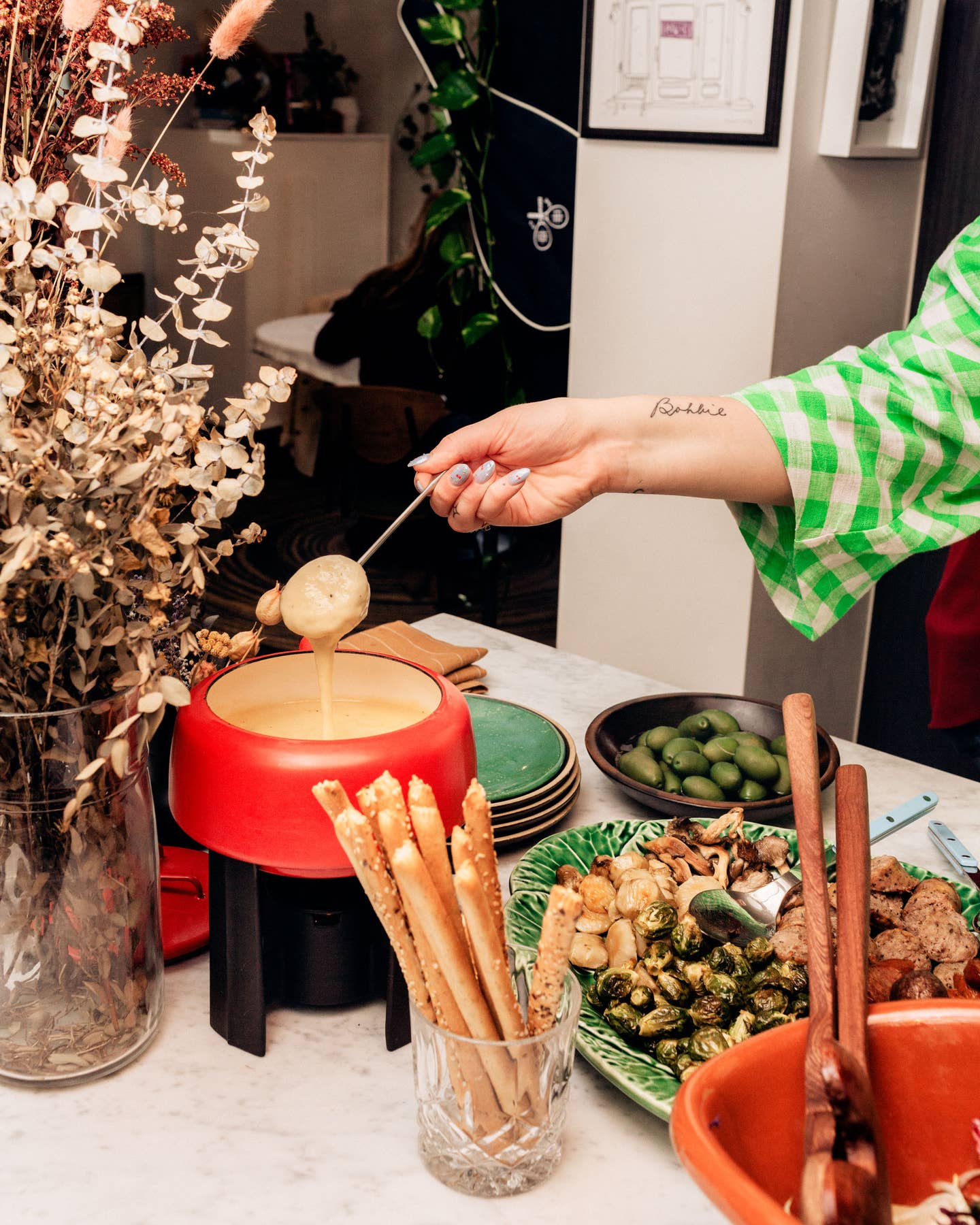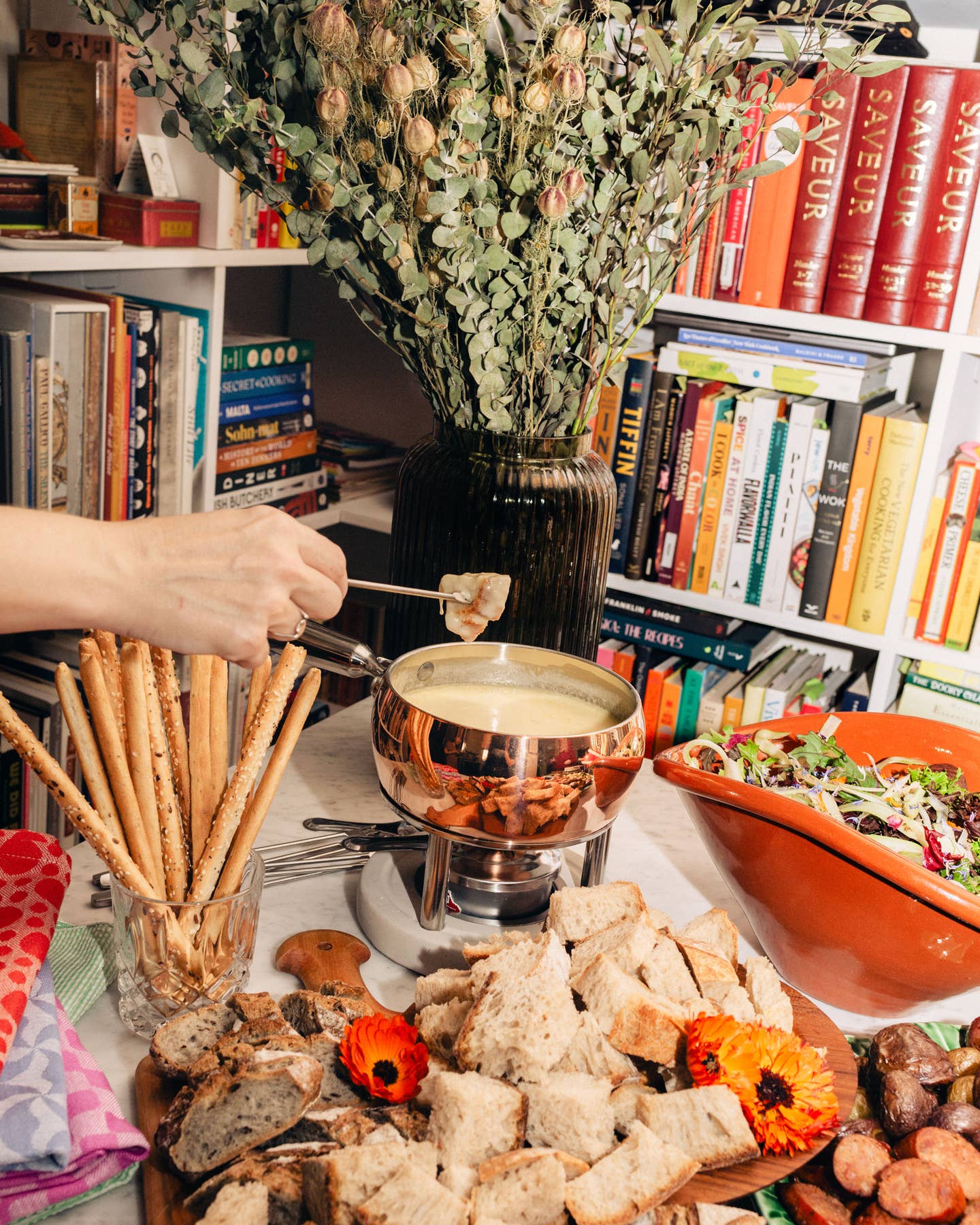A Puerto Rican Chef’s Outdoor Party Spread
For Manolo López, food is an avenue for activism. Here’s how he brings people together.
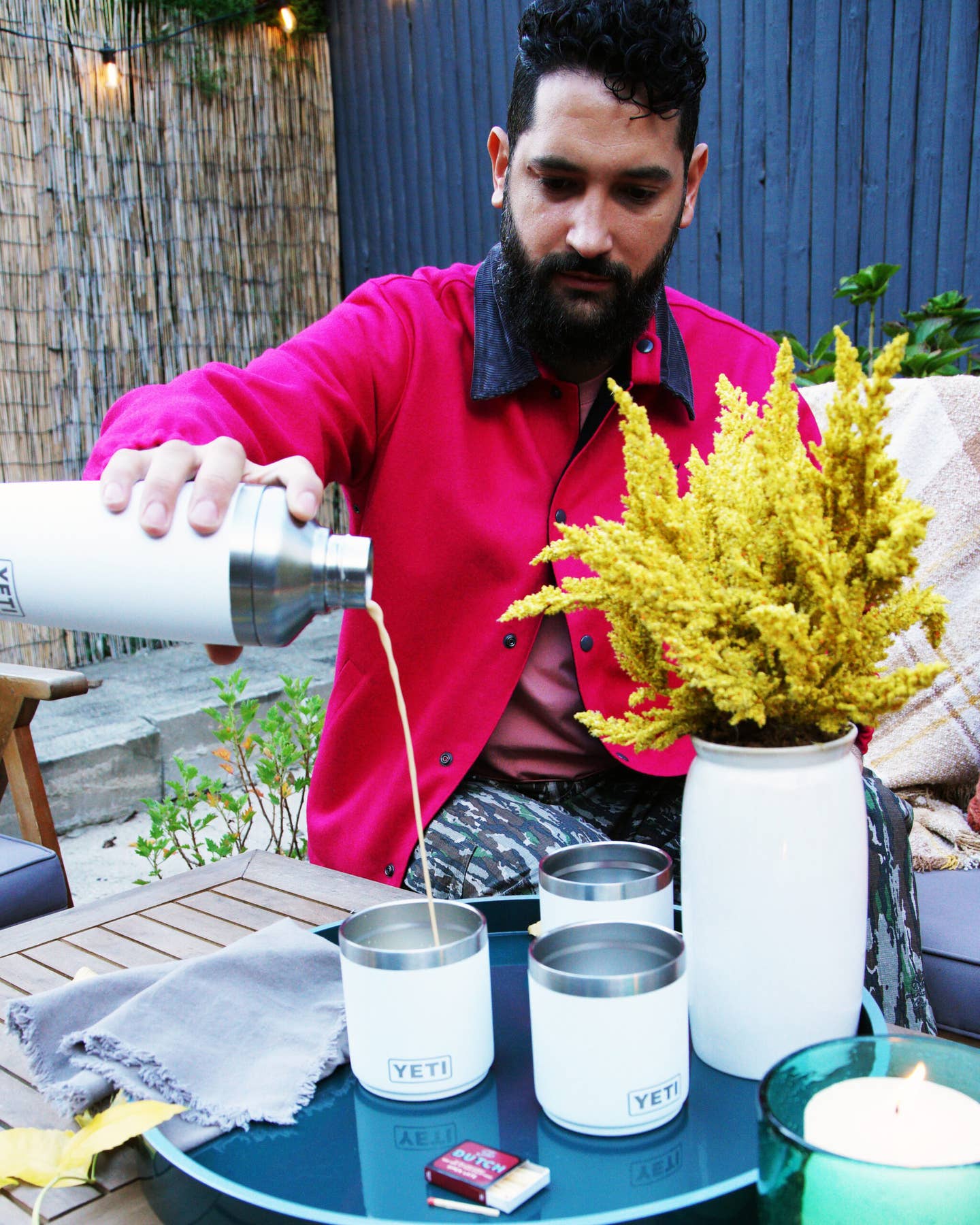
Chef and activist Manolo López is in New York doing what he does best: gathering community and playing the consummate host with the SAVEUR team. He’s in town premiering his documentary, My Puerto Rico: The Coffee, at the Latino Film Festival, which is another example of what López does best: using food as a launchpad for social and economic activism.
As he mixes up a batch of his favorite coffee cocktails in a YETI Rambler Cocktail Shaker, López shares some important context on the drink’s key ingredient. “Coffee pickers in Puerto Rico are paid less than $10 an hour,” he explains, a fraction of what they could make in countries like Colombia. “In 20 years, there won’t be any pickers left. This is what the government wants.” Eighty-five percent of food in Puerto Rico, including coffee, is imported. The local population gets little say in the matter.
López was born in the city of Mayagüez, though he says that it took living in New York for him to learn how to be Puerto Rican. After graduating from culinary and business schools on the island, he moved to Manhattan in 2011 to study design. He made ends meet by hosting supper clubs in outer-borough apartments. “No one came at the beginning,” he says, “then slowly, four, eight, 12 showed up. It was mainly Puerto Rican friends who were missing home.” Before long, he was cooking pernil and mofongo for 60 guests a night. “That was the first time I saw a diverse group of people enjoy Puerto Rican cooking.”
In 2014, López launched Mofon•GO, a pop-up stand at Brooklyn’s Smorgasburg market, to immediate international acclaim. Mofongo is a Puerto Rican mash of green plantains stuffed with meat or seafood that may come bobbing in a heady broth; proteins and flavorings vary by region.
On Sept. 20, 2017, Hurricane Maria struck Puerto Rico. The Category 5 storm—the deadliest in the island’s history—claimed 3,000 lives and caused $91 billion in damage. “There was no communication with the island for 10 days,” López recalls. “You start thinking about what you’re really doing. That’s when I knew I had to go back.” By October 10, he had sold his Mofon•GO equipment for capital and returned home with eight line cooks. “I couldn’t recognize the places I grew up around,” he says. “The storm made them unrecognizable.”
Immediately, he started cooking. For doctors, rescue workers, and anyone in need of food. As restaurants slowly reopened in the months that followed, he raised $55,000 in relief funds to get cash moving through their doors once again, which provided thousands of free meals to locals. “My focus and relationship with food changed completely,” he says of that time. “I did speaking engagements about the work we were doing at extravagant dinners, and I was coming from a situation where the food we provided someone may be their only hot meal for the week.” If he was to continue working as a professional chef, he knew the work couldn’t be about him anymore. “It can’t be me on a billboard just because I’m white-passing and speak English. I have to cook to empower my community.”
In recent years, López has focused on raising the visibility of Puerto Rican culture and political issues, while juggling speaking, cooking, event production, and documentary projects like My Puerto Rico. He uses food as a means of exchange and solidarity, rather than a product.
When López thinks of coffee, he envisions the traditional Puerto Rican method his grandmother uses, with the grounds steeped in a fabric “sock” filter, similar to a French press. At parties, this strong, inky brew is shaken with Puerto Rican rum and sweetened condensed milk in a cocktail shaker, then served toward the end of the night as a digestive aid. It’s his version of the carajillo, and López likes to mix it in a YETI Rambler Cocktail Shaker. “It has a nice weight and handles great. You can feel the ice as you’re shaking,” he says, which helps him gauge if a drink is properly mixed.
Rum is Puerto Rico’s main liquor, and as cocktail culture flourishes on the island, bartenders are using the spirit in novel ways. For López, that includes a cinnamon-rum old fashioned kissed with hickory smoke. At outdoor events, he serves drinks in insulated YETI Rambler Stackable Lowballs, which keep everything the perfect temperature—no matter the weather.
López will return to Puerto Rico just in time for the holidays. “Puerto Rico has the longest holiday season in the world,” he says with a smirk of pride. “The minute November 1 comes, people put up Christmas trees, and we celebrate until mid-January.” Everyone has a job at these parties, be it tying and roasting a pig or mixing carajillo nightcaps.
In his work, López wants to highlight the humanity of his home even after the news crews covering natural disasters pack up and leave. “We’re bringing the world closer to Puerto Rico,” he explains, “to fight the inequality we’re facing.” It’s a goal worthy of a toast.
Get the Recipes
Café con Leche Carajillo
Serves: 1
Time: 5 min.
Manolo López prefers to brew café de media—using a Puerto Rican-style sock strainer—for this sweet and creamy version of the boozy carajillo cocktail. Find this simple and inexpensive coffee maker at your local Latin grocery store, or online.
Ingredients
4 oz. freshly brewed black coffee, cooled slightly
2 oz. spiced Puerto Rican rum, such as Don Q Oak Barrel Spiced Rum
½ oz. sweetened condensed milk, plus more
Cinnamon stick, for garnish
Instructions
1. Fill the YETI Rambler 20 oz Cocktail Shaker with ice, then add the coffee, rum, and sweetened condensed milk. (If you prefer a sweeter drink, add a bit more sweetened condensed milk.) Secure the shaker lid and shake vigorously until the liquid is chilled and frothy, 15–20 seconds. Strain into a YETI Rambler 10 oz Stackable Lowball, finely grate a bit of cinnamon over the surface, garnish with the remaining cinnamon stick (if desired), and serve immediately.
Boricua Old Fashioned
Serves: 1
Time: 15 min.
For his riff on the classic old fashioned cocktail, chef Manolo López swaps out the usual whisky for Puerto Rican aged rum and sweetens the drink with cinnamon-infused syrup. His tip for an extra layer of fireside fragrance? Use a hand-held smoker to inject a whiff of hickory or applewood smoke directly into the YETI Rambler 10 oz Stackable Lowball and immediately secure the lid.
Ingredients
For the Cinnamon-Infused Syrup:
1 cup sugar
2–3 cinnamon sticks
For the cocktail:
3 oz. Puerto Rican aged rum, such as Ron del Barrilito
½ oz. cinnamon-infused syrup
3 dashes Angostura bitters
Peel of 1 sour orange
Instructions
1. In a small pot over medium-high heat, stir together the sugar and 1 cup water. Bring to a gentle boil, stirring until the sugar is dissolved, then add the cinnamon sticks, turn the heat down to medium-low, and cook until the syrup has reduced by about one-third and is deeply cinnamon-infused, about 10 minutes. Remove from the heat, remove and discard the cinnamon sticks, and cool to room temperature. (If not using immediately, transfer the cooled syrup to an airtight container and store in the fridge for up to 1 month.)
2. Make the cocktail: In your YETI Rambler 10 oz Stackable Lowball, combine the Ron del Barrilito and ½ ounce of the cinnamon-infused syrup (or more, if you prefer a sweeter cocktail). Add 3 dashes of Angostura bitters. Stir the mixture gently to combine, then add a large sphere or cube of ice and continue stirring until well-chilled. Express the oils from the sour orange peel over the drink before dropping it into the YETI Rambler 10 oz Stackable Lowball as a garnish. Serve immediately.
Keep Reading
Continue to Next Story





